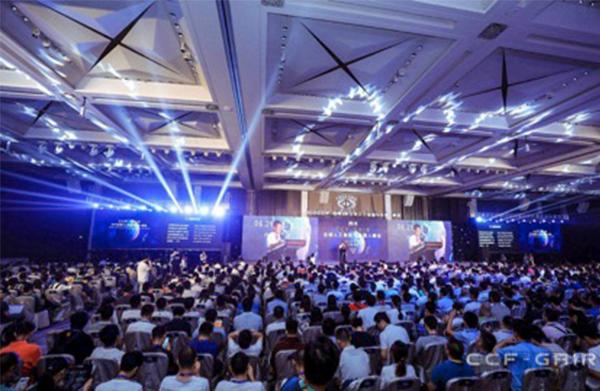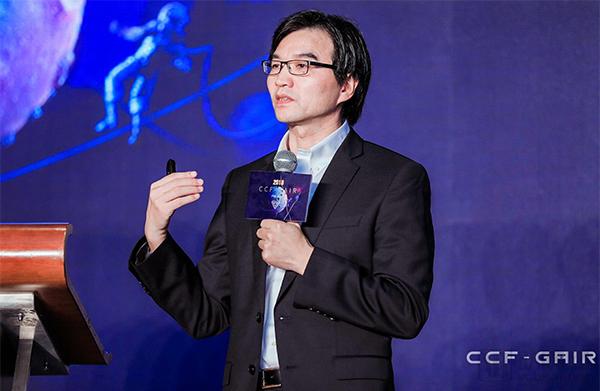Professor Shen Dinggang: The core of AI imaging lies in cooperation. Development depends on quality. High-dimensional images are the development direction.
As an important application of computer vision, AI recognition medical image is developing towards deepening and diversifying. Traditional 2D images are also moving forward to 3D (or even 4D) images. During this period, AI plays an increasingly important role in image analysis. AI-assisted reading has become a new normal, and it has been gradually popularized. So how much improvement can AI bring to medical image analysis? What is the future direction of "AI+ Medical Imaging"? We may be able to get insights from Professor Shen Dinggang’s speech. On June 29th, the "CCF-GAIR2018 Global Artificial Intelligence and Robot Summit" hosted by the China Computer Society (CCF), Lei Feng Network and the Chinese University of Hong Kong (Shenzhen) was held in Shenzhen. The conference brought together 140 guests in the field of artificial intelligence, and conducted in-depth discussions on 11 areas related to artificial intelligence. The guests who participated in the keynote speeches and reports included the Turing Award winners from the academic world, academicians of the Chinese Academy of Sciences, academicians of the Chinese Academy of Engineering, and top professors from CMU, MIT, and Stanford. There are also AI executives from industry. , covering Microsoft, Intel, Tencent and many other companies. At this summit, Professor of the University of North Carolina, Associate Co-CEO of IEEE, IEEE Fellow, Chairman of MICCAI 2019, Professor Shen Dinggang gave a lecture on "Deep Learning in Medical Image Analysis". The Arterial Network reporter listened to the speech and conducted an exclusive interview with Professor Shen Dinggang. Maintain close cooperation with doctors “In the United States for nearly 20 years, I have worked with doctors at the Department of Radiology at Hopkins University, the University of Pennsylvania, and the University of North Carolina at Chapel Hill, so I know their entire workflow and know how to put our artificial intelligence. Technology is better applied to the corresponding parts of their clinical processes. Instead of using artificial intelligence from beginning to end, that is impossible, at least for now.†Professor Shen Dinggang said in his speech. He said that the medical imaging AI company should clearly understand the direction of its research and development when developing products, and it is an auxiliary doctor, not a substitute doctor. R & D personnel must also know what the pain points of the hospital are, what the needs are, and then implement the appropriate technology according to the problem. Of course, the realization of technology is equally important, and only with qualified technology can we successfully cooperate with the hospital. The process of medical imaging AI companies testing products in hospitals is a process of cooperation, but this cooperation should not be limited to the exchange of data and equipment operations. If medical imaging companies want to do medical AI products, if they want to bring the best experience to doctors, they must first know what is the best experience, that is, they should be familiar with the whole process of diagnosis and treatment. In other words, researchers should not only stay in the field of imaging, but should go deep into the clinical scene, observe every process of clinician work, every detail, deeply understand the clinical application scenarios, and find out the combination with clinical treatment and diagnosis. Path, in order to know how to embed AI technology into existing clinical processes, streamline processes and improve efficiency; in order to make a product that is acceptable and competitive for doctors. In-depth cooperation with product quality as a paving stone In-depth cooperation needs to go back to the product itself, which is the performance of the AI ​​product itself. Professor Shen Dinggang believes that in today's endless stream of AI products, the core competitiveness of products still lies in their corresponding performance and application scenarios. At this stage, many products can achieve a higher accuracy rate of more than 90% in the testing process, but in reality, this may not be the result of a one-time detection (or the result of a completely independent sample). That is because many algorithms constantly adjust parameters according to the training data during the development process, so the accuracy obtained (especially the accuracy obtained in the development database) is difficult to obtain in practical applications. In addition, many companies are keen to showcase the excellence of AI in the form of man-machine wars. However, starting from the data preparation phase, this is no longer a fair game. “When preparing data, data on some quality issues (such as motion, image quality, image modal defects, etc.) will be discarded by the event preparer, so the filtered data is very beneficial for the AI ​​algorithm. But in reality, we It is impossible to provide patients with any diagnosis because of such problems, and there is no way to directly obtain the filtered data, so the results obtained on such data are of little practical significance. In addition, this has a certain degree for doctors and society. Misleading effect." Therefore, measuring the accuracy, sensitivity, and specificity of an AI product requires the use of new, unprocessed data collected by the hospital, rather than the selected data during the game. If the excellent test results cannot withstand the doctor's practice test, they can't match the doctor's workflow, and they can't go deep into the hospital system. Therefore, the introduction of the product and the re-introduction of the product will eventually return to the product quality itself. Full chain, full stack image artificial intelligence “What we need to do is full-chain, full-stack artificial intelligence. From imaging, screening, diagnosis, prognosis, and subsequent treatment and follow-up, the entire process can be assisted by AI, so that the entire process can be optimized. Good diagnostic results." Professor Shen Dinggang said. This stems from the natural advantages brought by Lian Ying Intelligence as a subsidiary of Shanghai Lian Ying Medical Technology Co., Ltd. (referred to as Lian Ying). “Lian Ying is currently the largest enterprise in China producing high-end imaging equipment. It requires a lot of AI technology in its imaging equipment, and artificial intelligence technology is used in front of images, in images and after images.†For example, he said, he can buy good imaging equipment in remote primary hospitals, but usually lacks good technicians and cannot accurately locate patients for scanning. At this time, computer vision can help patients to accurately locate and complete one-click scanning, and Choose the most appropriate scanning protocol. This ensures image quality from the source and ensures the quality of the collected data. "Not only that, the full-stack image artificial intelligence can do the AI ​​before and after. After a scanning device is installed on the AI ​​system, the AI ​​can actively find the source and scan the area of ​​the possible lesion more carefully. Make a more detailed picture for your doctor's reference. Many companies are now doing lung nodule testing, but usually in the case of a given image. Imagine if you combine the imaging process with the artificial intelligence diagnosis behind it, just like an experienced doctor sitting there during the scan. Every time you rebuild some slice images, the 'doctor' will tell you if there is any lung inside. Nodules, if there are suspicious lung nodules, they can be reconstructed more closely, and other normal slices are reconstructed according to the conventional thickness; that is, where there are suspicious lung nodules, the imaging device will be automatically reconstructed. In this example, we combine the artificial intelligence approach with the imaging process, which makes it possible to do better lung nodule examinations. †Professor Shen Dinggang believes that the combination of artificial intelligence and imaging should reach this level. Moreover, the disease diseases that are targeted should not be just one or two or five or six hot areas, but more disease types. To achieve this goal, we need not only rely on the company, but also many like-minded people to work together. "To do this, you can't do it with a joint intelligence company, so we have to be an ecosystem so that we can work with the majority of doctors, especially doctors who are willing to learn AI. We will do a big job, and we will also cooperate with open third-party companies. Share the AI ​​module of Lian Ying Intelligent, work with you to achieve win-win, and make AI solutions to achieve some rare diseases, more extensively Society, for the benefit of patients." "AI+Medical Imaging" has many possibilities, and there is a long way to go. In addition to the relentless pursuit of precision, medical imaging companies are constantly making innovations in other areas, and many new models and technologies are constantly evolving. Most of the domestic medical imaging AI technology still stays on the 2D level. Although it can still meet some medical requirements, with the development of technology, 3D and even 4D image AI can provide more clear and intuitive information, clearly reflecting the patient's condition. Distribution and change, for doctors, whether from a research perspective or a therapeutic perspective, will bring great breakthroughs. This also brings more possibilities for the development of "AI+ medical imaging". At the same time, this puts new demands on the development of computer hardware. As an application of computer vision, medical image AI research has high requirements for computing power at this stage. However, if you want to gain insight into the subtle changes of patients' lesions and explore the causes of their changes, you need to use 4D imaging technology for continuous image acquisition. More powerful computer hardware is needed to provide support. Everything is in development, and there are still many possibilities for "AI+Medical Imaging" in the future, and there is still a long way to go. YT-M95 YT-M95 Shenzhen Sunshine Technology Co.,Ltd , https://www.yatwinsz.com

